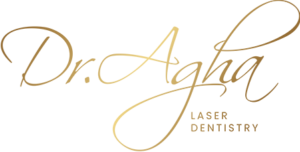Photobiomodulation, a cutting-edge technique in dentistry, utilizes light energy to enhance oral health and aid in various dental treatments. This innovative approach involves the application of low-level light therapy to stimulate cellular activity, promote tissue repair, and alleviate pain.
How Photobiomodulation Works
In the realm of dentistry, photobiomodulation employs low-intensity lasers or LEDs emitting specific wavelengths of light. These light sources are directed at targeted areas in the oral cavity. The light energy is absorbed by cells, triggering a cascade of biochemical reactions at the cellular level.
The process enhances cellular metabolism, improves circulation, and fosters tissue regeneration. This is particularly beneficial in reducing inflammation, accelerating wound healing after dental procedures, and mitigating pain associated with various oral conditions.
Applications in Dentistry
1. Pain Management:
Photobiomodulation has been effective in managing both acute and chronic dental pain. It can alleviate discomfort associated with temporomandibular joint disorders, tooth sensitivity, and post-operative soreness.
2. Accelerated Wound Healing:
After dental surgeries or procedures, photobiomodulation accelerates the healing process by promoting tissue repair and reducing inflammation at the surgical site.
3. Periodontal Therapy:
Light therapy can be used to assist in the treatment of gum disease by reducing inflammation and promoting gum tissue healing.
4. Orthodontics:
Photobiomodulation can aid in orthodontic treatments by mitigating pain and accelerating the realignment process by encouraging bone remodeling.
5. TMJ Disorders:
Patients suffering from temporomandibular joint disorders can find relief through photobiomodulation, which helps manage pain and inflammation in the jaw joint.
6. Nerve Trauma and Paresthesia:
Photobiomodulation shows promise in managing paresthesia caused by nerve trauma in dental procedures. It aids in nerve regeneration and can help restore sensation in areas such as the tongue and lip.
Advantages of Photobiomodulation
- Non-Invasive: Photobiomodulation is non-invasive and typically painless, making it a well-tolerated treatment option for patients.
- Reduced Recovery Time: By enhancing tissue repair and reducing inflammation, recovery time post-dental procedures is often shortened.
- Minimal Side Effects: The low-level light used in this therapy has minimal to no adverse effects, making it a safe choice for various patients.
- Complementary to Traditional Treatments: Photobiomodulation can complement conventional dental treatments, enhancing their efficacy and improving overall patient outcomes.
Photobiomodulation’s applications in dentistry hold promise for improving oral health outcomes and enhancing the patient experience. As technology continues to advance, we can expect further integration of this light-based therapy into routine dental care, contributing to a more holistic and efficient approach to oral wellness. Specifically, its potential in managing nerve trauma and aiding nerve regeneration brings new hope for patients experiencing paresthesia and loss of sensation in critical areas of the oral cavity.

